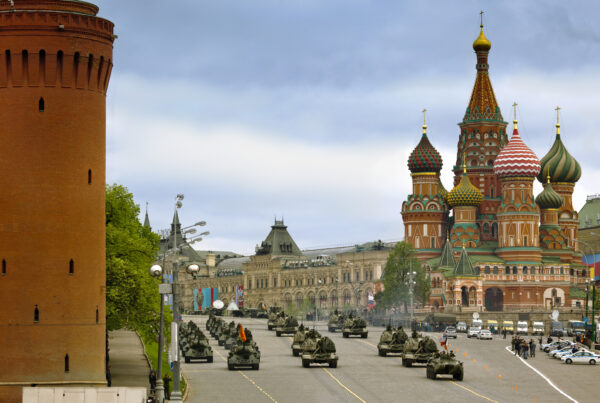April 9, 2012 | By James L. Jones and Jason S. Grumet
As oil and gasoline prices rise, political pressure to tap the roughly 700 million barrels in the national Strategic Petroleum Reserve is building, including among some in Congress. The global oil market is fundamentally strained and suffering from an array of unwelcome but unremarkable problems. Yet the oil reserve is neither designed nor well equipped to address these chronic weaknesses. Instead it should be preserved to address an emergency disruption in supply.
While no one can confidently predict the global oil market, arguments that prices will remain high throughout the year seem at least as compelling as the more optimistic alternative. Global supplies are tight, and the hope for an improving global economy will only increase demand. Historically, Saudi Arabia has maintained a cushion of spare production capacity of about 5 percent of global daily supply. This spare capacity has played a critical role in calming the market when instability threatens oil-producing nations. That spare capacity is now likely to be only 3 percent, which will make it more difficult for Saudi Arabia to increase production on short notice.
The past year of unrest in North Africa and the Middle East has not resulted in any major supply disruptions, but roughly 1 percent of global production has come off the market because of diminished production in Sudan, Yemen and Syria, and the growing impact of United States and European sanctions on Iranian production. If successful, President Obama’s recent decision to press forward with more aggressive sanctions will put pressure on Iran and strain global oil markets further. Indeed, increased international cooperation in putting the sanctions into effect is good news in the effort to prevent Iran from gaining nuclear capability.
Iran’s total production is now about 3.4 million barrels per day, of which 2 million barrels per day are exported. The United States Energy Information Administration predicts that the tougher sanctions scheduled to take effect this summer could cut demand for Iranian oil exports in half. This combination of circumstances, however, does not yet constitute a severe supply disruption. Using the reserve now would be premature, reduce our national security options and perhaps even undermine the goal of calming oil markets.
Since its inception in 1975, the oil reserve has been drawn upon under two types of circumstances. There have been a variety of minor withdrawals unrelated to global market disruptions, including test sales, exchanges to address minor domestic supply interruptions and even sales in 1996 and 1997 to raise $220 million to balance the federal budget.
The oil reserve has also been employed three times to address global supply disruptions — during the first Iraq war, after Hurricane Katrina, and last year, when President Obama authorized the release of 30 million barrels in response to the withdrawal of Libyan oil during that country’s civil war. In each instance, the releases were coordinated internationally, through the International Energy Agency, with some oil offered by the European Union, the United States and other non-OPEC nations. Each of these emergency releases sought to remedy a discrete supply reduction and none offer a precedent for a release under the current circumstances.
While the Strategic Petroleum Reserve is not an effective tool to address the present circumstances, the president and Congress must take more strategic and lasting action to protect the public and the economy from the effects of $100-a-barrel oil and $4-a-gallon gasoline. Despite the traditional election-year rancor, there is actually considerable bipartisan agreement on what needs to be done. Increasing domestic oil production is extremely important to our economy and to reducing our trade deficit.
The United States is the third largest oil producer in the world and United States production must continue to play a critical role in meeting global demand. That production is projected to grow by more than 1 million barrels a day by 2020. If this increase is achieved, the American contribution to the global market will push down global prices and could enable some increase in global spare capacity.
The Obama administration should continue to accelerate efforts to open new areas for production and encourage efforts to construct the distribution infrastructure needed to support increased production. However, no amount of production can insulate the United States from the global market and global price spikes.
The ability to protect our economy from oil price shocks is determined primarily by the amount of oil we use compared to the size of our economy. In 1975, our economy used 1.2 barrels of oil for every $1,000 of gross domestic product (2005 dollars); in 2010, we used only half a barrel of oil for the same amount of G.D.P. This reduction was achieved by moving away from oil in the production of electricity and by substantial increases in fuel economy.
A diversified energy sector and highly efficient vehicles are strategies supported by a vast majority of Congress. While it is certain that we will continue to rely on oil for decades, there is considerable support in both parties for efforts to diversify transportation fuels through research and development and the deployment of biofuels, electric and natural gas vehicles. All of these actions will continue to increase the oil-efficiency and resiliency of the United States economy.
For four decades, the emergency role of the Strategic Petroleum Reserve to specifically address large supply disruptions has been a subject of national consensus. We must protect this critical component of our national and economic security and accelerate efforts to protect consumers and the economy from future volatility in the oil markets.
Gen. James L. Jones (retired), a former national security adviser to President Obama and a retired Marine Corps general, is a senior fellow at the Bipartisan Policy Center. Jason S. Grumet is president of the Bipartisan Policy Center.







